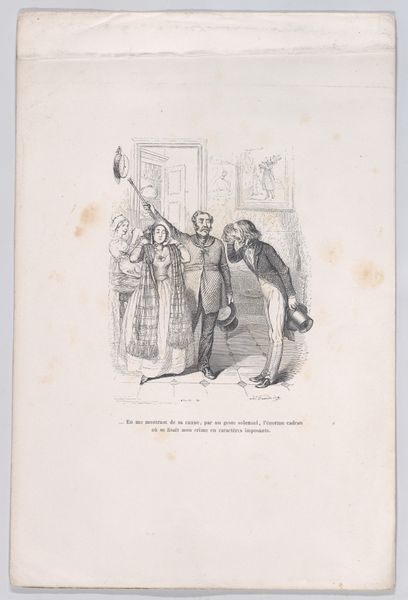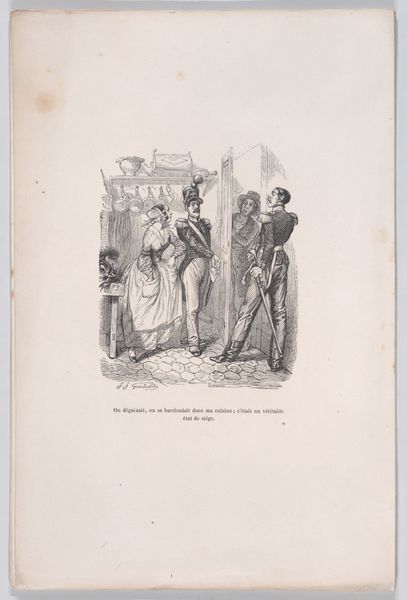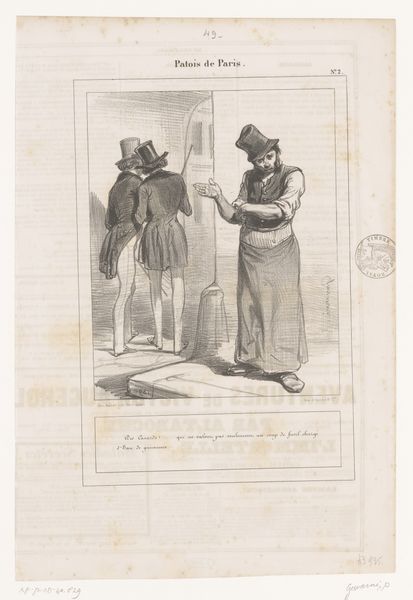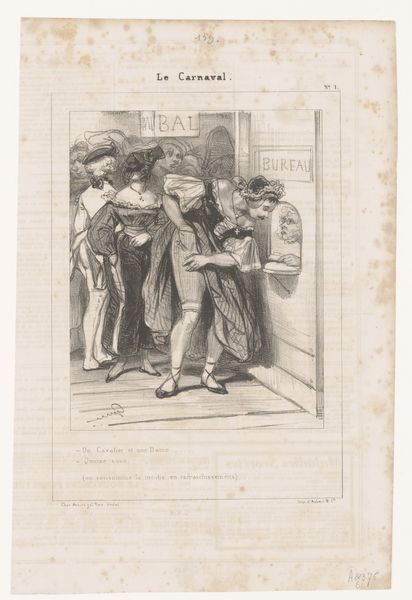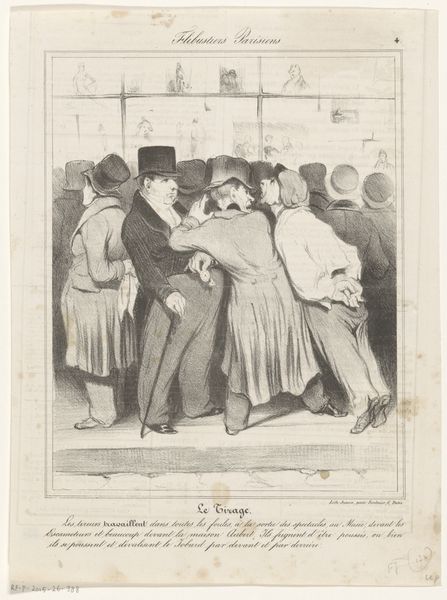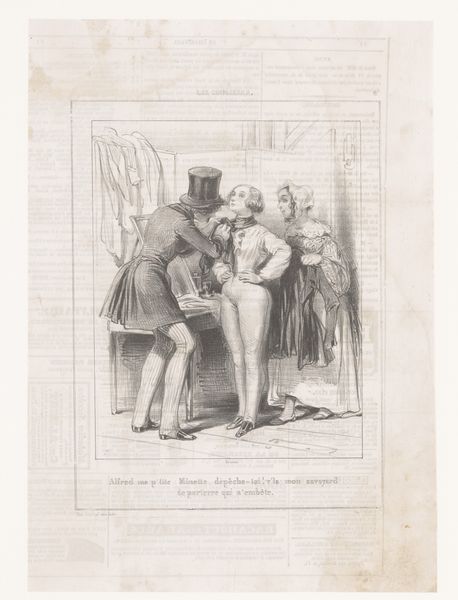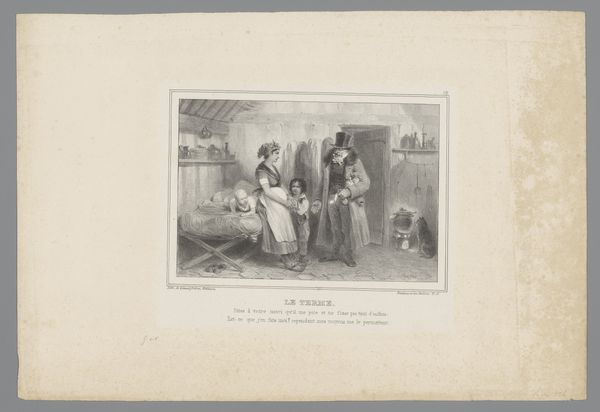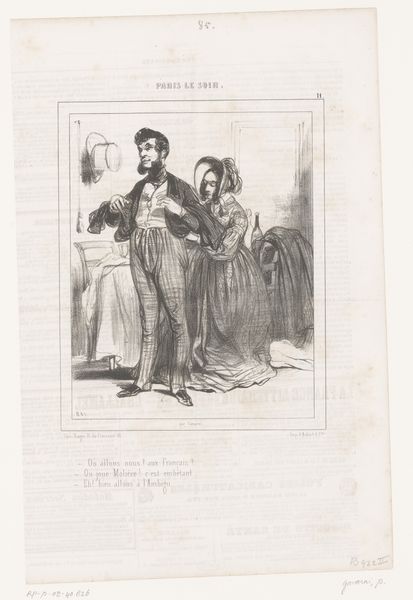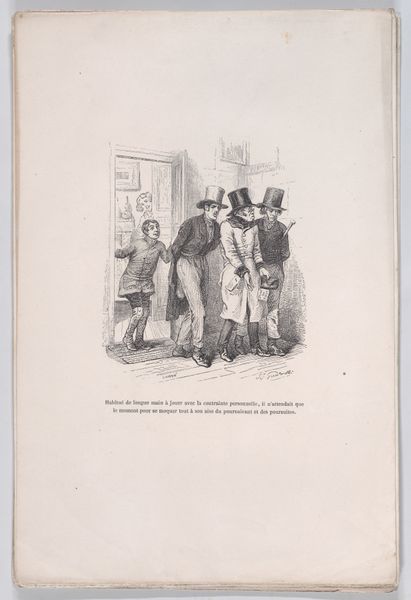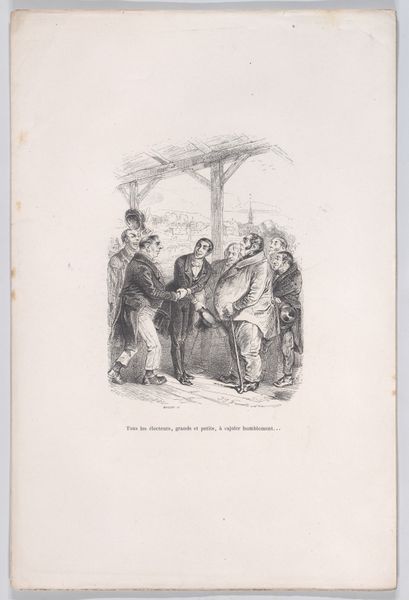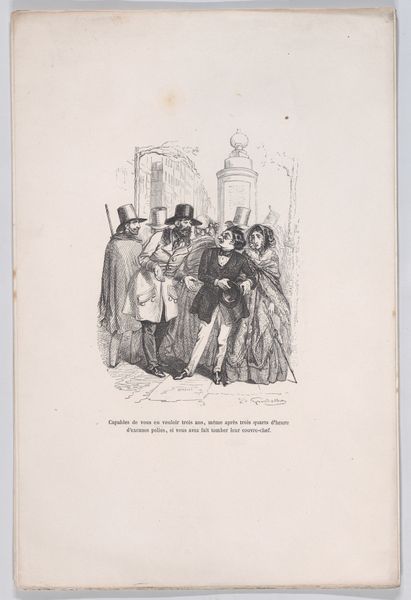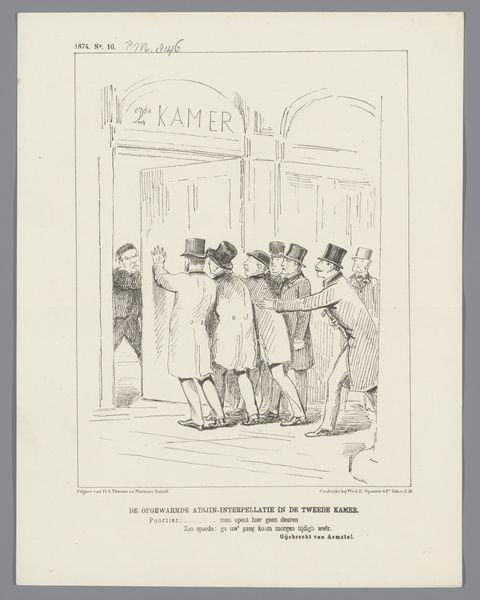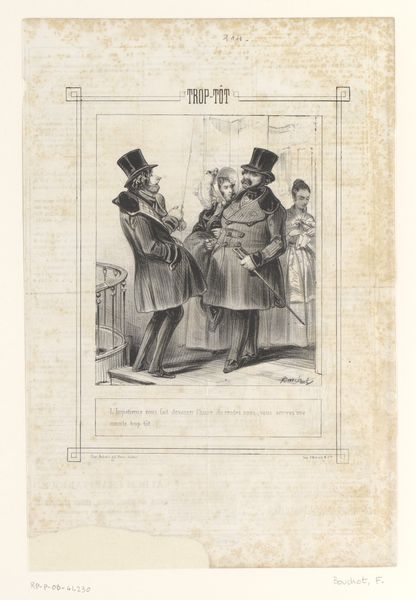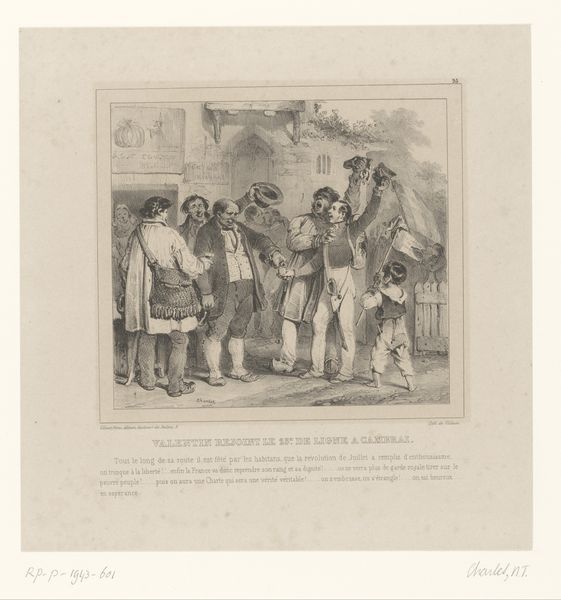
print, ink
#
portrait
# print
#
caricature
#
old engraving style
#
figuration
#
ink
#
romanticism
#
19th century
#
genre-painting
Dimensions: height 363 mm, width 240 mm
Copyright: Rijks Museum: Open Domain
Curator: Allow me to introduce Edouard de Beaumont's "Caricature of Three French Sailors Giving Dance Lessons," created in 1843. It's currently held in the Rijksmuseum. Editor: Well, my first thought is how rigidly composed the piece appears, despite depicting a supposedly lighthearted dance lesson. There's an undeniable stiffness to the figures that strikes me. Curator: Indeed. The rigidity is interesting when viewed through a lens of cultural imposition. It's a print, likely reproduced on a fairly large scale, making the process of its production, circulation, and reception all very important. Editor: Absolutely. It feels like a window into a clash of cultures. The sailors, stiff in their posture, represent a colonizing force attempting to impose "civilized" customs upon the islanders. Dance as a metaphor for social control, perhaps? The indigenous people almost look like they’re being suffocated or drowned by this foreign “lesson”. Curator: Precisely. It compels us to question the intended audience of the work itself and how the image reinforces notions of colonial power dynamics. I think there is the labor involved to consider also, that of making the prints and shipping the supplies for the artist to make his works from location. It emphasizes unequal distributions, surely. Editor: Visually, consider the sailors’ all-white clothing juxtaposed against the darker tones used to depict the islanders. It's a clear visual symbol of racial hierarchy. Note the islanders’ faces; they are much more expressive. Is de Beaumont implying an intrinsic nature here, or perhaps some reaction to being imposed upon? Curator: That contrast underscores the artist’s, and perhaps the wider societal view, of purity versus perceived “otherness.” Considering Beaumont was active during the rise of Romanticism, there are certainly idealized aesthetics that he applies to his figuration of people, I'd expect. Editor: In the end, what begins as a seemingly humorous scene becomes a potent visual statement on the complexities and problematic dynamics of colonial encounters. There's more melancholy to be found the longer you linger on each face. Curator: Exactly. When viewed through a modern lens, this work provides ample insights regarding the power of imagery, print as a means of production, to reinforce unequal social structures. I do wonder how it's perceived when viewed today.
Comments
No comments
Be the first to comment and join the conversation on the ultimate creative platform.
